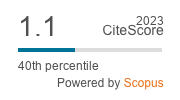Malaysian Journal of Mathematical Sciences, July 2008, Vol. 2(S)
Special Edition - National Conference on Mathematical Biology 2006
Modeling and Kinetic Determination in Affinity Precipitation of Trypsin
Syaubari, Saari M., Chuah T. G. , Zulkafli G. and Ishak M.
Corresponding Email: [email protected]
Received date: -
Accepted date: -
Abstract:
A mathematical model was proposed to allow the analysis of kinetic enzyme in experimental of affinity precipitation system. The methodology was tested using a system composed of enzyme, ethylene glycol and conjugated PABA-poly (NIPAM). N-isopropylacrylamide (NIPAM) is one of the monomers that have appealed to a great deal of investigation in the recent years. Its homopolymer NIPAM possesses
temperature sensitivity and can act as a functional polymer with great potential. A water soluble ligand bound polymer has been synthesized by Electron Beam Irradiation for the purpose of affinity precipitation of trypsin. The affinity polymer was formed by ligand-PABA. The binding efficiency of trypsin to this polymer was dependent upon the ratio of (NIPAM), mercaptopropionic acid (MPA) as a chain transfer reagent and p-aminobenzamidine (PABA) as ligand that used in the polymer synthesis. The amount of precipitated of poly (NIPAM) present in the polymer solution also greatly affected the trypsin binding efficiency. The total binding capacity of trypsin molecules to ligand molecules approached the theoretical value which was considerably higher than that of insoluble gel matrices. Bound trypsin could be easily eluted by the ethylene glycol solution. At low molecular weight of poly (NIPAM), the conjugate polymer solution was very stable and retained its high
capacity for trypsin recovery over a long period of time. The proposed analysis and simulation of kinetic parameters may be helpful in affinity precipitation technique for advanced application.
Keywords: modeling, mathematics, enzyme kinetics, PABA-ligand, trypsin, affinity precipitation









